2.3.4: Coterminal Angles
- Page ID
- 14353
Set of angles with the same terminal or end side.
While playing a game with friends, you use a spinner that looks like this:
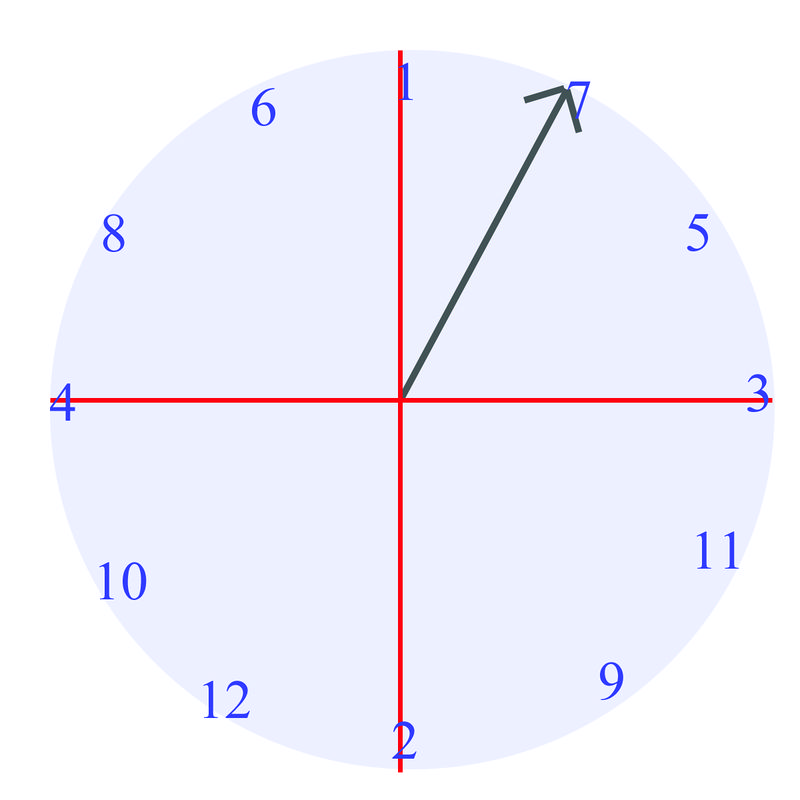
As you can see, the angle that the spinner makes with the horizontal is \(60^{\circ}\). Is it possible to represent the angle any other way?
Coterminal Angles
Consider the angle \(30^{\circ}\), in standard position.
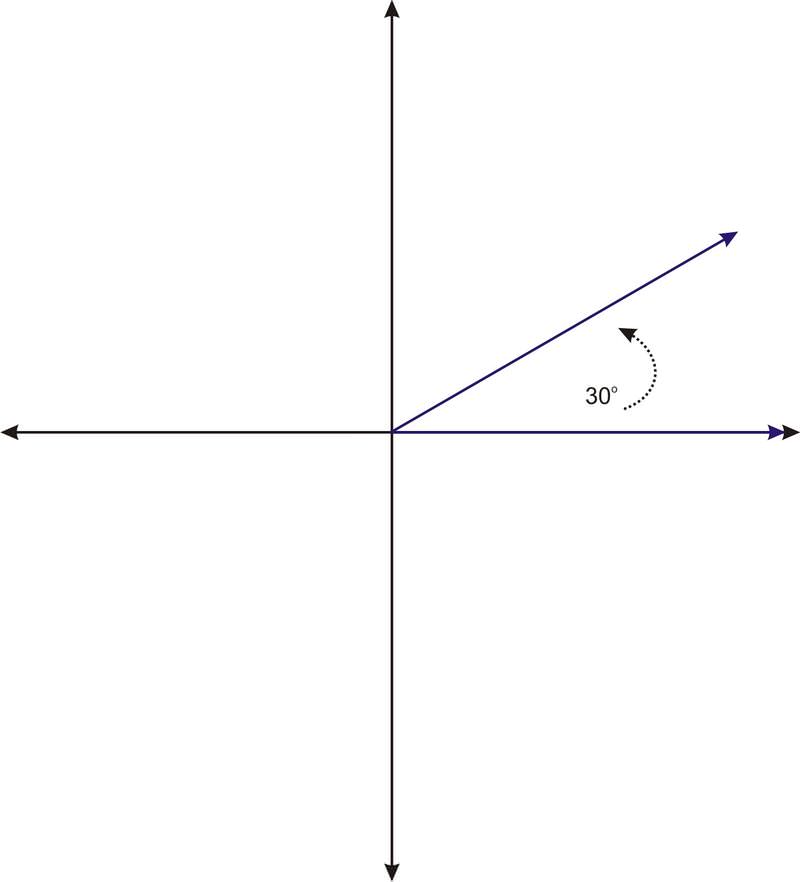
Now consider the angle \(390^{\circ}\). We can think of this angle as a full rotation (\(360^{\circ}\)), plus an additional 30 degrees.
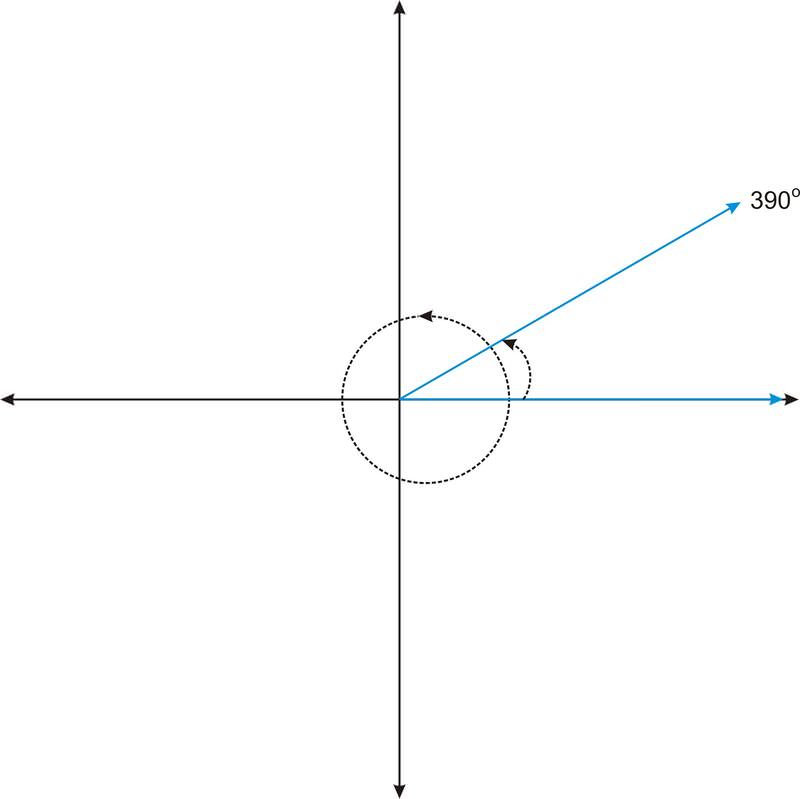
Notice that \(390^{\circ}\) looks the same as \(30^{\circ}\). Formally, we say that the angles share the same terminal side. Therefore we call the angles co-terminal. Not only are these two angles co-terminal, but there are infinitely many angles that are co-terminal with these two angles. For example, if we rotate another \(360^{\circ}\), we get the angle \(750^{\circ}\). Or, if we create the angle in the negative direction (clockwise), we get the angle \(−330^{\circ}\). Because we can rotate in either direction, and we can rotate as many times as we want, we can continuously generate angles that are co-terminal with \(30^{\circ}\).
Identifying Co-Terminal Angles
For the following questions, determine if the angle is co-terminal with \(45^{\circ}\).
1. \(−45^{\circ}\)
No, it is not co-terminal with \(45^{\circ}\)
2. \(405^{\circ}\)
Yes, \(405^{\circ}\) is co-terminal with \(45^{\circ}\).
3. \(−315^{\circ}\)
Yes, \(−315^{\circ}\) is co-terminal with \(45^{\circ}\).
Earlier, you were asked if it is possible to represent the angle any other way.
Solution
You can either think of \(60^{\circ}\) as \(420^{\circ}\) if you rotate all the way around the circle once and continue the rotation to where the spinner has stopped, or as \(−300^{\circ}\) if you rotate clockwise around the circle instead of counterclockwise to where the spinner has stopped.
Find a coterminal angle to \(23^{\circ}\)
Solution
A coterminal angle would be an angle that is at the same terminal place as \(23^{\circ}\) but has a different value. In this case, \(−337^{\circ}\) is a coterminal angle.
Find a coterminal angle to \(−90^{\circ}\)
Solution
A coterminal angle would be an angle that is at the same terminal place as −90^{\circ}\) but has a different value. In this case, \(270^{\circ}\) is a coterminal angle.
Find two coterminal angles to \(70^{\circ}\) by rotating in the positive direction around the circle.
Solution
Rotating once around the circle gives a coterminal angle of \(430^{\circ}\). Rotating again around the circle gives a coterminal angle of \(790^{\circ}\).
Review
- Is \(315^{\circ}\) co-terminal with \(−45^{\circ}\)?
- Is \(90^{\circ}\) co-terminal with \(−90^{\circ}\)?
- Is \(350^{\circ}\) co-terminal with \(−370^{\circ}\)?
- Is \(15^{\circ}\) co-terminal with \(1095^{\circ}\)?
- Is \(85^{\circ}\) co-terminal with \(1880^{\circ}\)?
For each diagram, name the angle in 3 ways. At least one way should use negative degrees.
-
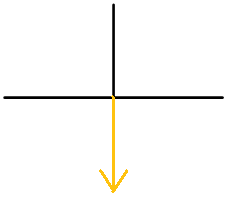
Figure \(\PageIndex{4}\) -
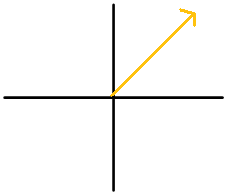
Figure \(\PageIndex{5}\) -
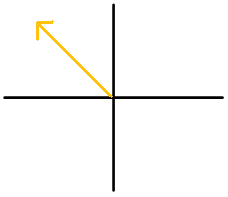
Figure \(\PageIndex{6}\) -

Figure \(\PageIndex{7}\) -
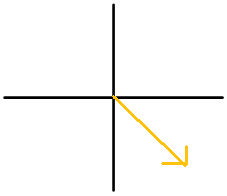
Figure \(\PageIndex{8}\) - Name the angle of the 8 on a standard clock two different ways.
- Name the angle of the 11 on a standard clock two different ways.
- Name the angle of the 4 on a standard clock two different ways.
- Explain how to determine whether or not two angles are co-terminal.
- How many rotations is \(4680^{\circ}\)?
Review (Answers)
To see the Review answers, open this PDF file and look for section 1.16.
Vocabulary
| Term | Definition |
|---|---|
| Coterminal Angles | A set of coterminal angles are angles with the same terminal side but expressed differently, such as a different number of complete rotations around the unit circle or angles being expressed as positive versus negative angle measurements. |
Additional Resources
Video: Example: Determine if Two Angles are Coterminal
Practice: Coterminal Angles

